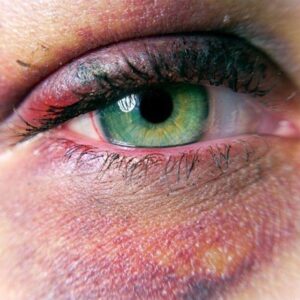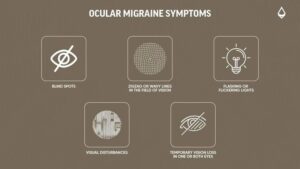
Anushka Super Speciality Eye Hospital
Call: 90044 44422 / 99213 44422 | Timings : 8.30 a.m to 5.30 p.m (Mon-Sat) | Add: Shri Swami Samarth Soc, Kaneri Dhamankar Naka, Bhiwandi




Accredited for Quality Care
Understanding Colour Vision: Defects, Causes, Jobs, Tests, and Everyday Life
anushka
29 September 2025
When you open your eyes in the morning, one of the first things you notice is colour. The blue sky, green plants, red chilli in your kitchen masala box. Colour is so much part of life that we don’t even think about it. But not everyone sees colours the same way. Some people see them differently, some can’t separate shades properly, and a few can’t see them at all. That’s what we call colour vision defects.
Now, colour vision is not just about enjoying sunsets or matching clothes. It can decide careers, safety on the road, or even how well a person can manage daily tasks. In this blog, I’ll walk you through what colour vision is, what goes wrong when defects happen, which jobs require perfect colour vision, causes behind defects, how some systemic illnesses are linked, and what kind of instruments we use to test it. Let’s go step by step.
What Exactly Is Colour Vision?
Colour vision simply means the ability of our eyes to detect light at different wavelengths and translate it into colours. The retina of our eyes has two types of photoreceptor cells – rods and cones.
- Rods help us see in dim light, but they don’t see colour.
- Cones are the real heroes of colour vision.
There are three main types of cones:
- L-cones (long wavelength – red)
- M-cones (medium wavelength – green)
- S-cones (short wavelength – blue)
When these cones work together, we see the entire spectrum of colours. But when one set doesn’t work properly, that’s when colour vision problems start.
Types of Colour Vision Defects
Colour vision defects can be congenital (from birth) or acquired later in life. Let’s split them up.
1. Congenital Colour Vision Defects
These are genetic, usually passed down in families. Most are X-linked, which means more common in men than women.
- Protan Defects (Red weakness):
- Protanopia – complete red blindness.
- Protanomaly – reduced sensitivity to red.
- Deutan Defects (Green weakness):
- Deuteranopia – complete green blindness.
- Deuteranomaly – reduced green sensitivity (most common).
- Tritan Defects (Blue weakness):
- Tritanopia – no blue vision.
- Tritanomaly – weak blue vision.
(This one is rare compared to red/green issues.)
- Monochromacy:
- Person can only see shades of grey. Extremely rare.
- Achromatopsia:
- Total absence of colour vision. Life looks black and white.
2. Acquired Colour Vision Defects
These come later in life due to eye disease, brain damage, or systemic illness. They can affect both eyes differently (unlike congenital, which usually affects both equally).
Common causes:
- Optic neuritis
- Glaucoma
- Macular degeneration
- Diabetes-related eye disease
- Certain medicines (like digoxin, ethambutol)
- Trauma to the eye or brain
Colour Vision Sensitive Jobs
Now, this is where things get serious. In India (and globally), many jobs have strict requirements for colour vision. Why? Because one mistake due to wrong colour judgement can risk lives.
- Defence Forces (Army, Navy, Air Force)
- Perfect colour vision is a must. Can you imagine a soldier misreading a signal flare?
- Aviation (Pilots, Air Traffic Controllers)
- Red/green signals are critical. One mistake in reading runway lights can cause disaster.
- Railways and Metro services
- Train drivers, signal staff need clear colour vision.
- Maritime/Shipping
- For navigation lights and signals.
- Electricians and Engineers
- Identifying colour-coded wires is impossible with colour blindness.
- Police and Fire Services
- Quick response often depends on colour-coded signs and signals.
- Medical fields
- Pathologists, surgeons, and even optometrists need good colour vision to identify subtle signs.
But it doesn’t mean colour vision defective people can’t live normal lives. They just need to be aware of their limitations and pick careers accordingly.
Causes of Colour Vision Problems
Like I said earlier, causes can be congenital or acquired. Let’s put them together.
Congenital Causes:
- Genetic mutations (mostly X-linked).
- Runs in families.
- Stable throughout life (doesn’t worsen with age).
Acquired Causes:
- Eye diseases: Glaucoma, optic neuritis, diabetic retinopathy, cataract, age-related macular degeneration.
- Systemic diseases: Diabetes, multiple sclerosis, Alzheimer’s, Parkinson’s, sickle cell disease.
- Medications:
- Ethambutol (TB drug) – causes optic nerve toxicity.
- Hydroxychloroquine – retinal toxicity.
- Digoxin – visual disturbances.
- Trauma: Eye injuries or brain trauma affecting visual pathways.
Colour Vision and Systemic Illness
This part is often ignored but super important. Colour vision changes can actually indicate systemic illnesses.
- Diabetes: Can cause blue-yellow defects due to retinal changes.
- Multiple Sclerosis: Optic neuritis is common, leads to acquired red-green defect.
- Hypertension: Long-term damage to retina may also disturb colour perception.
- Parkinson’s disease: Loss of dopamine affects retina and colour sensitivity.
- Alzheimer’s: Subtle defects in colour discrimination may appear.
So sometimes colour vision testing is not just about career fitness – it’s also a clue to systemic health.
Testing Instruments for Colour Vision
There are many ways to test colour vision. Some are quick screening tools, others are detailed diagnostic instruments.
1. Pseudoisochromatic Plates
- The most famous one is Ishihara Test.
- Numbers or patterns made of coloured dots on a background.
- Quick, simple, good for detecting red-green defects.
- But not very good for blue-yellow or subtle cases.
2. Farnsworth D-15 Test
- Involves arranging coloured caps in correct order.
- Helps identify type and severity.
3. Farnsworth-Munsell 100 Hue Test
- More detailed version with 85 caps.
- Used in research and for professions needing high accuracy.
4. Anomaloscope
- Gold standard for diagnosing and grading red-green defects.
- Patient has to match colours by adjusting light mixtures.
- Rarely available in India because of cost.
5. Lantern Tests
- Especially used for occupations like defence or aviation.
- E.g., Edridge-Green Lantern, Holmes-Wright Lantern.
- Shows small coloured lights to check real-life signal recognition.
6. New Computerized Tests
- Now many apps and digital tools exist, but still, traditional methods are considered more reliable.
Living With Colour Vision Deficiency
It’s not the end of the world. People adapt. They use patterns, positions, brightness, and context to guess colours. For example, even if someone can’t tell red from green, they still know the top traffic light is red.
Technology is also helping:
- Special tinted glasses and contact lenses.
- Apps that identify colours using the phone camera.
But again, these don’t cure the condition. They just help in daily life.
Closing Thoughts
Colour vision is something most of us take for granted, but when you dive into it, it’s fascinating and complex. From genetics to systemic diseases, from choosing careers to passing simple eye tests, colour vision touches many parts of life.
For some people, defects mean restrictions in career choices, but it doesn’t mean they can’t live fully. The key is awareness. If someone has colour vision issues, they should get tested early, understand their condition, and plan life accordingly.
Eye hospitals and optometrists in India are now better equipped with testing instruments, and awareness is slowly spreading. And honestly, that’s a good thing. Because vision is not just about seeing – it’s about understanding what you see.
Frequently Asked Questions (FAQs) on Colour Vision:
1. What is colour vision?
Colour vision is the ability of our eyes and brain to detect and differentiate wavelengths of light, which we see as different colours. It’s mainly controlled by cone cells in the retina.
2. What causes colour vision defects?
Most colour vision problems are genetic, passed down from parents. Other causes include eye diseases (like glaucoma or cataract), damage to the optic nerve, or systemic illnesses such as diabetes.
3. Can colour blindness be cured?
At present, there’s no complete cure for inherited colour blindness. But tinted glasses, contact lenses, and digital aids can help people distinguish colours better. If the problem is acquired (due to a disease or medicine), treating the underlying cause may improve colour vision.
4. What are the types of colour vision deficiency?
The main types are:
- Protan defect (red weakness)
- Deutan defect (green weakness)
- Tritan defect (blue weakness, very rare)
- Complete colour blindness (achromatopsia, extremely rare)
5. How is colour vision tested?
The most common test is the Ishihara chart, where patients identify numbers hidden in coloured dot patterns. Other tests include Farnsworth D-15, Anomaloscope, and computer-based tests.
6. Which jobs require normal colour vision?
Jobs like pilots, sailors, train drivers, electricians, defence services, and some medical fields require accurate colour vision. In these professions, misidentifying signals or wires can be dangerous.
7. Is colour blindness more common in men or women?
It’s much more common in men. About 1 in 12 men have some form of colour vision deficiency, compared to only about 1 in 200 women.
8. Can colour blindness worsen with age?
Genetic colour blindness usually stays the same throughout life. But acquired colour vision problems (due to cataract, macular degeneration, or diabetes) may worsen over time if not treated.
9. Can systemic diseases affect colour vision?
Yes. Conditions like diabetes, multiple sclerosis, and Parkinson’s disease can affect the optic nerve or retina, leading to colour vision defects.
10. How do colour vision glasses work?
Special tinted lenses filter certain wavelengths of light, making it easier for the brain to separate colours that otherwise look similar to a colour-blind person. They don’t “cure” the problem but improve day-to-day colour recognition.
11. Can people with colour blindness drive?
Most people with mild to moderate colour vision deficiency can drive. However, in some countries or for certain professional licenses, strict colour vision tests are required.
12. How can schools support children with colour vision deficiency?
Teachers can avoid colour-based instructions (like “highlight in red”), use symbols or labels instead of colours, and provide learning aids that don’t rely only on colour.
Recent Posts


